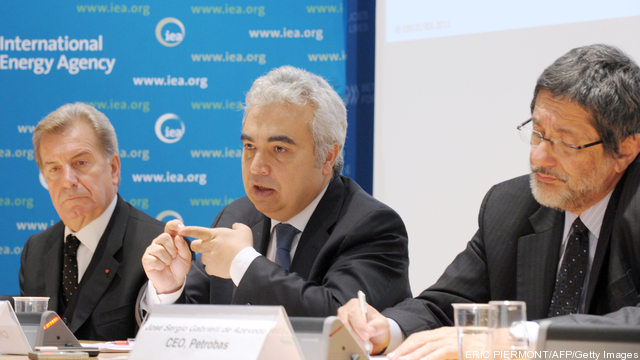
China has the world’s largest-ever program to build new nuclear generating plants, the world’s largest-ever program to build renewables, government mandates to vastly improve efficiency – and the world’s largest coal building program.
China’s situation was used by International Energy Agency experts to illustrate why their first report on coal’s prospects over the next five years, the Medium-Term Coal Market Report 2011, has concluded coal will remain the world’s dominant fuel, despite growing worries about climate change.
The developing world is scrambling for electricity and coal is usually the cheapest option, Didier Houssin, IEA Director of Energy Markets & Security, told a forum at the Center for Strategic & International Studies in Washington, DC Wednesday .
Coal Goes To Sea
While natural gas might make inroads if there are future large shale discoveries, as has happened in the US, the IEA experts said worldwide demand for electricity is growing so fast that nothing on the horizon will replace coal, which now supplies 40% of electricity. Most new demand comes from the developing world, and they expect coal to supply about half of new power through 2016.
Most coal is locally mined and burned, noted Laszlo Varro, head of IEA’s Gas, Coal & Power Division, but a growing amount – more than a billion metric tons last year – is traded internationally.
Traditionally, coal importers have been industrialized but resource-poor countries like Japan, South Korea and Taiwan. But in the last decade, emerging economies like China and India have turned to imports as well.
Varro said both countries have a lot of domestic coal, but India’s mining sector can’t meet demand and China’s coal is mostly in remote western regions and costly to rail east.
In each case, importing coal became the less expensive option. China is now the world’s second largest importer, taking about 150 million metric tonnes last year, and India is fourth.
China’s size and flexibility – it is importing for cost, not lack of resources – also make it a world price setter, with coal prices rising as China buys more and dropping when it uses less.
Varro said most importing countries compare international coal prices to the cost of other energy imports like LNG, while China compares the world prices to the cost of delivering domestic production to its plants. China is trying to raise its own production by opening more efficient, safer mines.
Varro stressed the uncertainty about China in world markets, saying economists predict China’s imports “will either double or fall by two-thirds in the next five years.” But with 90,000 megawatts of coal generation under construction now, there’s little doubt China’s coal use is going up.
Benefits For The US
The world situation has benefited the US, which is a relatively high-cost coal producer but has spare production capacity. US producers can provide coal when other suppliers are maxed out, making the US a “swing supplier,” though it exports less than Australia, Indonesia, or Russia.
International prices have been volatile. Houssin said prices have varied between $60 and $120 a metric tonne for steam coal imported to Europe in the last couple of years.
Supply bottlenecks have been not mines but transportation. Building rail lines from mines to ports and building ports to accommodate large seaborne carriers are multi-billion dollar investments, Varro said.
But the IEA study found sufficient infrastructure, existing and planned, for coal exports to continue to grow in the medium term, though some countries that now export, like Vietnam, will use increasing amounts of their coal domestically.
Guy Caruso, Senior Advisor for the CSIS Energy & National Security Program, said IEA officials recognize that the continued growth in coal use is “unsustainable” in the longer term, without controls on carbon.
But the IEA’s first five-year forward look for coal finds no signs of coal use declining worldwide.
Photo Caption: International Energy Agency IEA Chief Economist Fatih Birol (C) talks as Brazil’s state-controlled energy giant Petrobras CEO Jose Sergio Gabrielli de Azevedo (R) and and Italian energy giant Enel CEO Fulvio Conti (L) listen at the end of a press briefing at the IEA ministerial meeting at the OECD headquarters in Paris on October 18, 2011.
